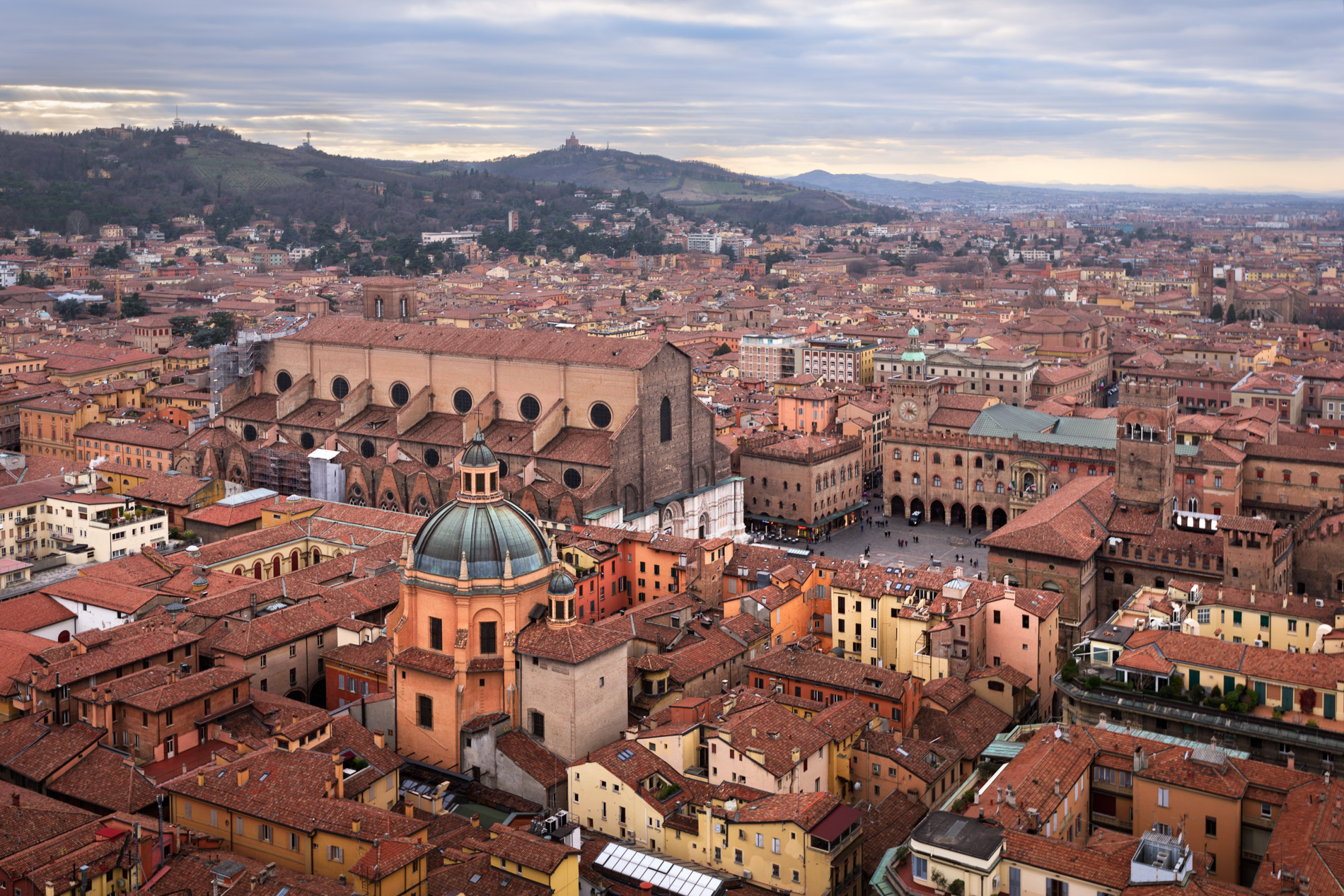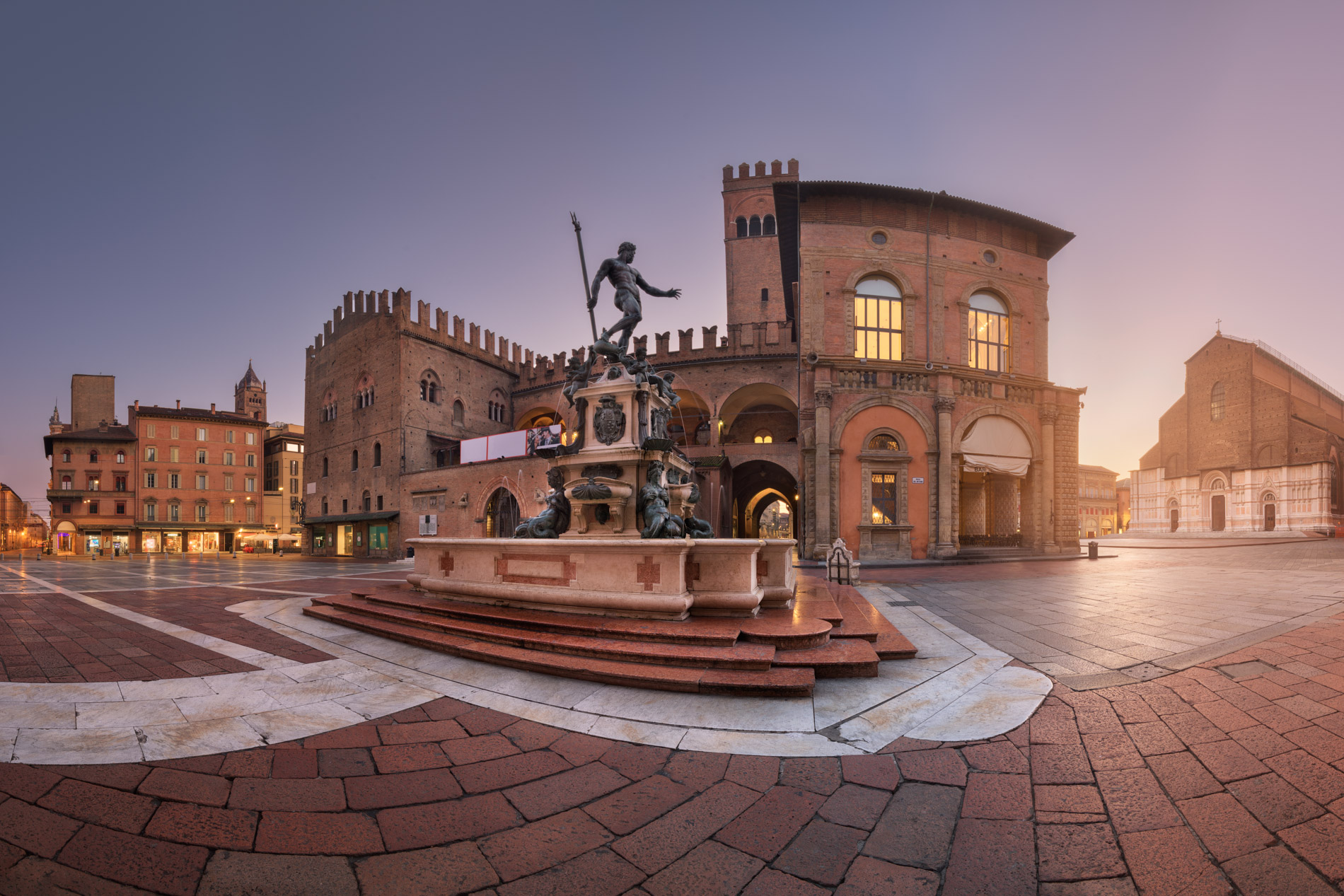Bologna, Italy
Travel highlights from culinary capital of Italy
17 Feb 2020 by Andrey Omelyanchuk
Less well-known than Rome, Venice, and Florence, Bologna is often overlooked by travelers. Many group tours bypass the city entirely, focusing instead on its more famous counterparts. But I found the city, which is home to one of Europe’s oldest universities, to be a curious alchemy of a grand, imposing history and a scrappy, rough-around-the-edges character forged by centuries of often fractious politics.
I arrived in Bologna knowing little about the city aside from its decadent cuisine, including the world-famous dish that it is its namesake. One of the many nicknames of Bologna is La Grassa, or “the fat,” a nod to the city’s famously rich foods. But as I strolled through the city, basking in the shade provided its many porticoes — another thing for which it is famous — I learned there is much more to Bologna than its food and its university.
Taking in a view of the city from the Asinelli Tower, I looked out on a sea of vermillion, terra cotta, flaming orange and every shade in between. Long known as La Rossa, or “the red,” the city is famous for the many shades of red that adorn its roofs and walls. If there is a reason that the residents of Bologna chose to bathe their city in such vibrant shades, it’s unknown to me, but it made for a striking view as I took in the city from one of its famous towers.

Aerial View of Bologna from Asinelli Tower, Bologna, Emilia-Romagna, Italy
But depending on what source you consult, there is another reason that Bologna is often referred to as La Rossa. The city has a long history of turbulent, often left-leaning politics. During World War II, Italy initially fought alongside the Axis Powers, but Bologna remained staunchly anti-fascist, its men and women alike becoming partisans who earned the city the Medal of Resistance because of their determined opposition to Mussolini. There was resistance to Mussolini throughout the country, but Bologna, along with several of the country’s northern industrial cities, was liberated from Nazis and Fascists only in the war’s last days. The fighting in the area was bitter until the war’s end and those who resisted fascism paid a steep price. A short walk from Bologna’s Neptune Fountain is a stark memorial to the Bolognese resistance fighters who died or, in many cases, were executed in the square. When the war ended, their family members left flowers and photographs of their missing relatives. Almost a century later, their faces — more than two thousand of them — still look out at the city that they loved.

Fountain of Neptune and Piazza del Nettuno, Bologna, Italy
Partly in reaction to the massacre of thousands of partisans by fleeing Nazis at the war’s end, Bologna in the postwar years became a Communist enclave. Given its history as an industrial center and a home to numerous workers’ parties, Bologna’s adoption of Communism isn’t as unusual as it might seem. For much of the twentieth century, the city council was led by Communists. And it wasn’t only Bologna; the entire region of Emilia-Romagna was regarded as one of the “reddest” in western Europe.
And of course, there is the city’s great pride, the University of Bologna, one of the oldest in the world. With a vibrant population of college students, the city has long had a reputation for its left-leaning politics and student protests. Walking through the city, it’s not uncommon to see vibrant, politically themed street art in proximity to the city’s elegant medieval structures. Murals and posters, often espousing radical political views, can be found in many parts of the city but they don’t often last. One day’s political statement can disappear overnight, replaced with another. University lectures are frequently moved from one hall to another because of protests outside. On at least one occasion, the imposing university library was taken over by student protestors who barricaded themselves inside and refused to let police enter.

Sanctuary of the Madonna di San Luca in the Evening, Bologna, Emilia-Romagna, Italy
As I explored the city, I found that there are few places in Bologna that haven’t been touched in some way by the city’s politics. The grand Piazza Maggiore, lined with some of the city’s most historically significant buildings, has been a center of the city’s political life practically since its inception. Built in phases starting in the 13th century, the grand plaza is beloved by the Bolognese and many of its most significant events — the heroic as well as the tragic — have been mourned and celebrated there. Built in the oldest part of the city, the Piazza has witnessed much of the city’s history. One must wonder what its stones would say if they had the ability to speak, to give an account of the events they’ve witnessed.

Piazza Maggiore and San Petronio Basilica, Italy
But after immersing myself in Bologna’s often turbulent political history, I wanted to end the day in a calmer, more contemplative place. I wandered the city’s streets until I came to Santo Stefano, the labyrinthine complex of religious structures whose varied architectural styles denote the long passage of time that Bologna has witnessed. The complex originally consisted of seven churches, but today only four remain intact. A remarkable maze of porticoes and courtyards adorned with intricate stonework, the complex is one of the city’s most revered sites. It dates so far into Bologna’s distant history that its exact beginnings are uncertain; many believe that the church began with Petronius, a bishop in the 5th century, who chose the site of an ancient Roman temple. His remains were once housed in the complex, and for many years, pregnant women of Bologna would walk around his tomb 33 times — one for each year of Jesus’s life — before crawling through a small door to offer a prayer to his remains. It was a curious ritual whose origins are unknown to me, but I can understand why young mothers-to-be came here to pray for the wellbeing of their unborn children. It’s a calming, serene place, and after days of studying Bologna’s political history, I welcomed the serenity. The walls were cool, and the only sounds were my footsteps on the stones and the whispered prayer of an occasional worshipper.

Piazza Santo Stefano in the Evening, Bologna, Emilia-Romanga, Italy
I can’t remember exactly what my expectations were when I went to Bologna. But what I found was a richly complex city and one fiercely proud of its history.
View Bologna galleryCategory
Related Posts
Login Required: Please login or create an account to post comments.



